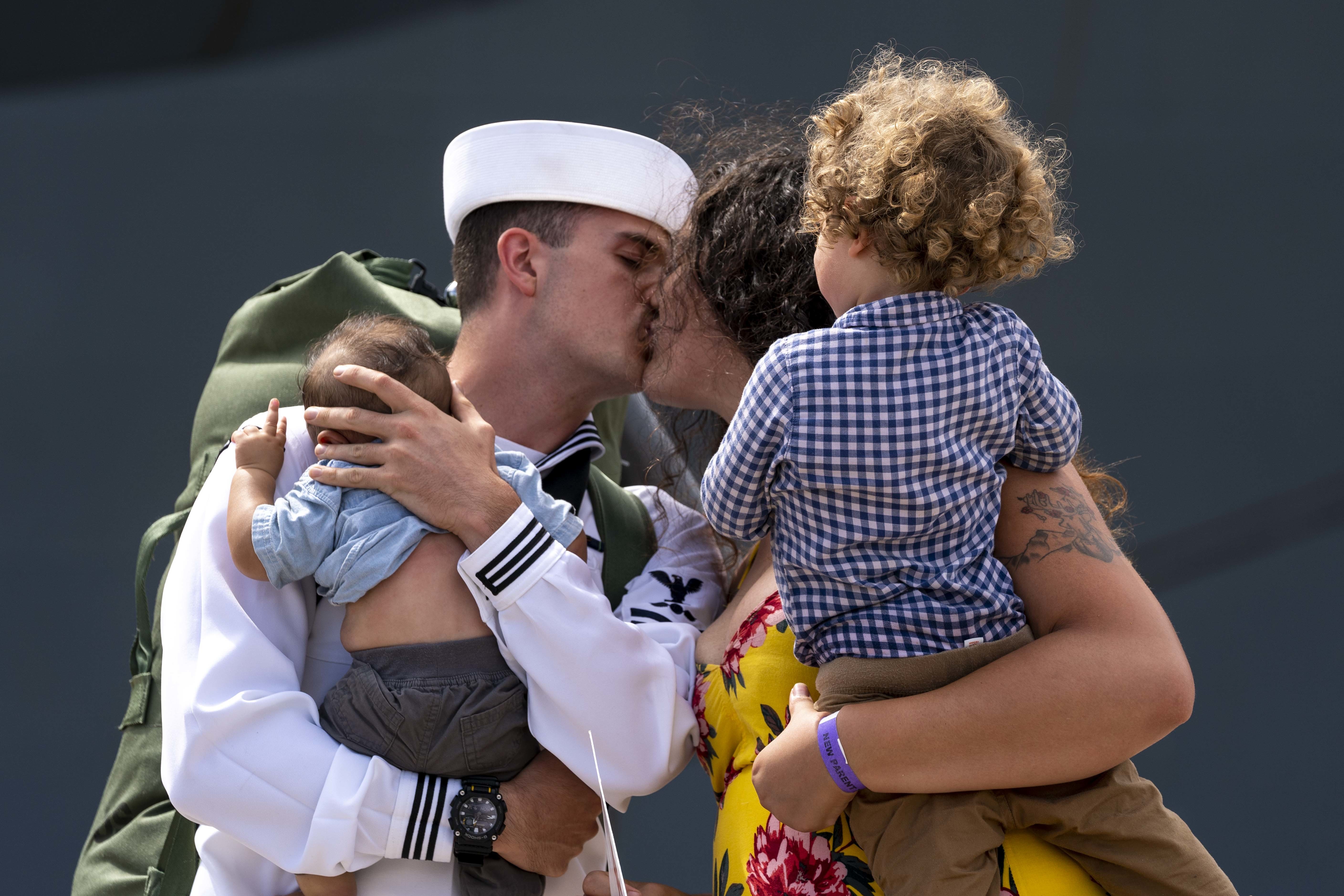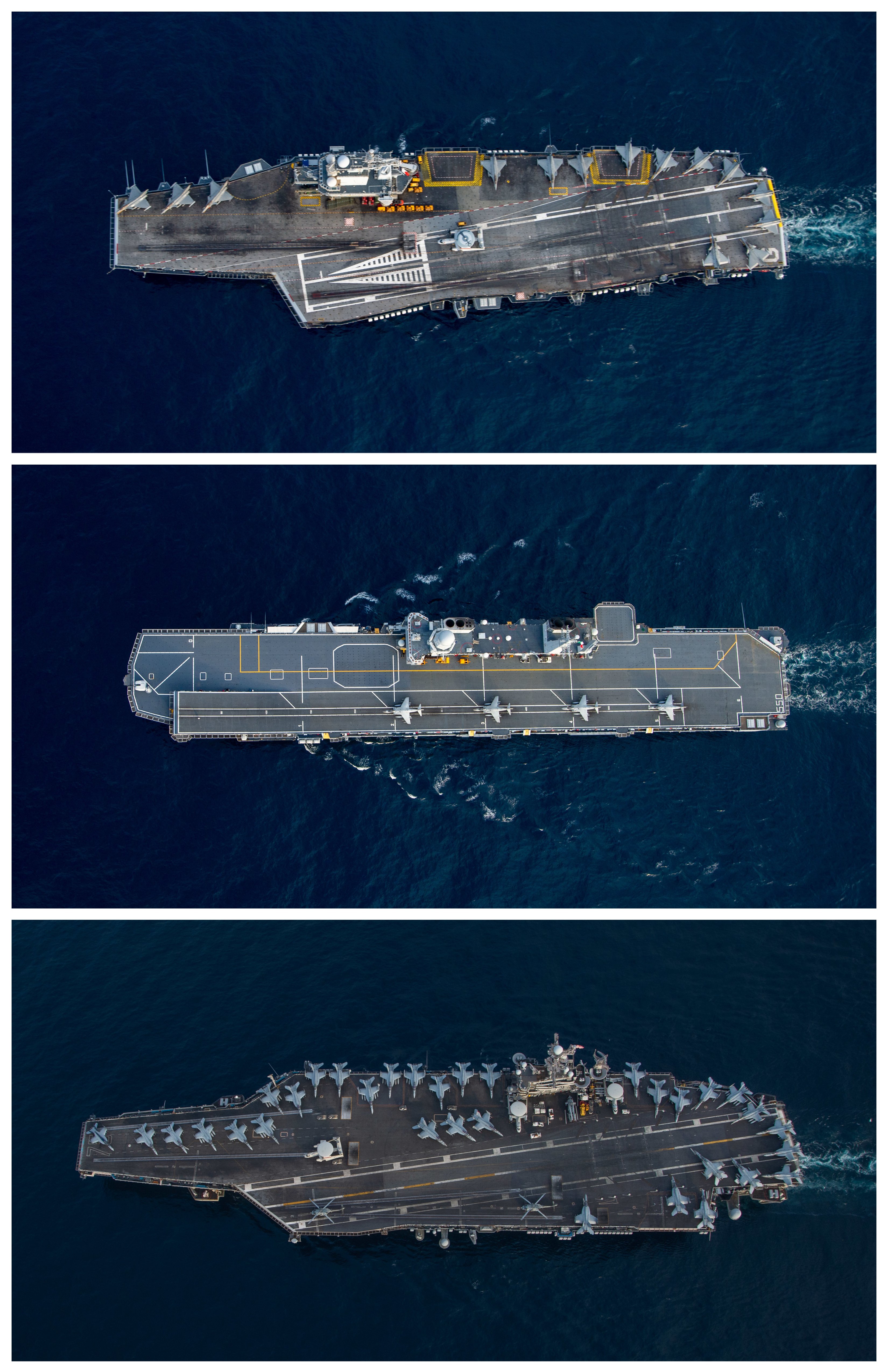
USS Harry S. Truman (CVN-75) pulled into port in Norfolk, Va., after more than nine months operating in the Mediterranean Sea – the longest a U.S. aircraft carrier has operated continuously in U.S. European Command in more than 20 years.
From December to mid-August, Truman, Carrier Air Wing 1 and its escorts were the most visible U.S. deterrent aimed at Russia’s expanding invasion of Ukraine and the carrier strike group was part of ongoing operations on NATO’s eastern front. Since the end of U.S. operations in Afghanistan last year, the focus of carrier operations shifted to U.S. 6th Fleet.
Those responsibilities have now shifted to the George H.W. Bush Carrier Strike Group, which arrived in the Mediterranean Sea Aug. 25.
In the months ahead of the February Russian invasion, Defense Secretary Lloyd Austin retasked the CSG from a planned slate of operations in the Middle East to an extended patrol in the Mediterranean Sea, USNI News reported at the time. In total, Truman spent more than eight months in the Mediterranean Sea in and out of direct tactical NATO control.
“The ship sailed more than 65,000 nautical miles, all while conducting multiple operations in the region to include enhanced air policing missions, dual and tri-carrier operations, and the NATO- led vigilance activities Neptune Shield 22 and Neptune Strike 22,” according to a statement from U.S. 2nd Fleet.
Truman is the second carrier to come under NATO control since the end of the Cold War, USNI News previously reported.

In March, USNI News reported from aboard Truman that the air wing was flying 60 to 90 sorties a day as part of the presence operation and NATO air policing mission in the early days of the invasion.
In a subsequent interview with USNI News earlier this month, commander of Carrier Air Wing 1 Capt. Patrick Hourigan said the air policing mission was about 10 percent of the sorties flown from Truman.
“We would move around the Mediterranean. Sometimes we would do [the] enhanced air policing mission for a period of time, and then we would move to another location,” he said.
“When we’re in the area, our contribution was relatively small compared to the whole effort [but] our participation remained consistent as we moved on and off station.”
The air policing mission along the eastern front took the air wing as far north as Latvia, Hourigan said. NATO had established an air refueling corridor for aircraft along the front.
“At different times, there were at least three NATO countries whose tankers we used as well as Air Force assets and our own organic F-18s [tankers],” Hourigan said.
“The furthest north we went was Latvia and we sent a detachment to participate in BALTOPS 22.”
During the deployment, Truman transferred several times between NATO and U.S. control as part of several exercises.

“We had mutually supportive command structures. The movement, faculty control to NATO, and then back from NATO, back to 6th fleet was very seamless,” CSG commander Rear Adm. Paul Spedero told USNI News.
During its time in the Mediterranean, Truman operated with several NATO capital ships, including French carrier FS Charles de Gaulle (R 91), Italian carrier ITS Cavour (CVH 550) and Spanish Armada amphibious assault ship ESPS Juan Carlos I (L 61).
“We learned quite a bit from them. I mean, again, the interactions were extremely helpful. advancing our relationship, understanding each other’s capabilities,”
Spedero said.
“I think there’s certainly potential in the future where we might, we might see one of our allied aircraft carriers as the central focus of a [NATO] carrier strike group.”
Based on the USNI News carrier deployment database, the length of the deployment is the longest one in Europe in the last 20 years and the overall fourth longest carrier deployment since 2000.
The carrier’s deployment also saw the largest collection of Russian ships in the region in recent memory, Spedero said. The Russian Navy sortied ships from both the North and Pacific fleets that converged in the Mediterranean Sea.
“I would say probably a relatively historic level of activity of Russian vessels in the Mediterranean, all our interactions with them were safe and professional. I don’t have anything I can report there, but as far as the numbers and their movement through the Mediterranean I would say it was fairly significant,” he said.

USS Jason Dunham (DDG-109) and USS Gravely (DDG-107) have already returned home to Naval Station Mayport, Fla., and Naval Station Norfolk, respectively. Jason Dunham arrived on June 26, while Gravely came home on June 24. USS Cole (DDG-67) and USS Bainbridge (DDG-96) returned last week.
USS Gonzalez (DDG-66) and USS Forrest Sherman (DDG-98), which deployed with the strike group, are still underway. Norwegian guided-missile frigate HNoMS Fridtjof Nansen (F310) deployed with the strike group and returned in May.
For the strike group, the work with NATO marks a shift in how the CSG is set to work with international navies in Europe.
“We saw … under NATO tactical control an extremely viable and extremely powerful combat force postured and ready for anything. I think it’s built it for tremendous amount of confidence. And I think it was a strong deterrent to Russia,” Spedero said.





